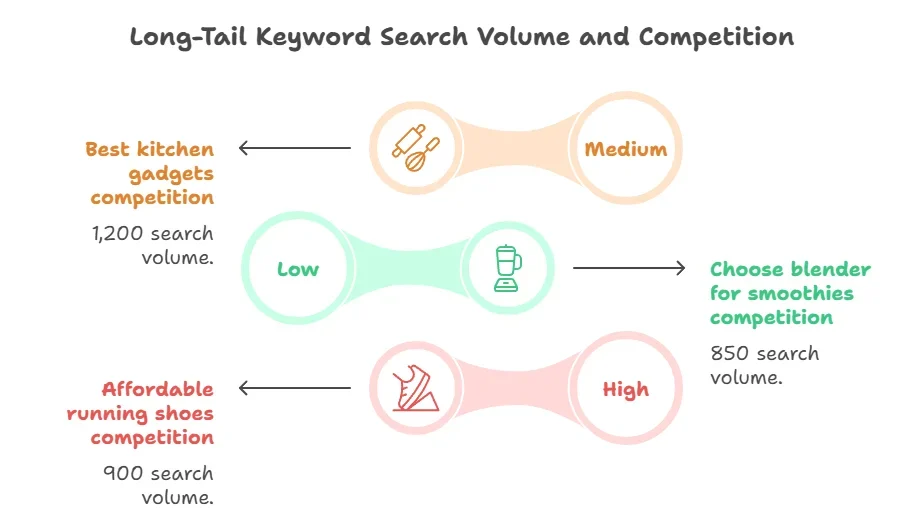
Long-tail Affiliate Keywords are phrases that typically contain three or more words, specifically targeting niche markets. These keywords are more specific than broad keywords and allow you to reach a more defined audience. For instance, instead of using a general term like “shoes,” a long-tail keyword would be “best running shoes for flat feet.” This specificity makes Long-tail Affiliate Keywords powerful tools for affiliate marketers aiming to attract more targeted traffic.
Understanding the distinction between broad keywords and Long-tail Affiliate Keywords is crucial. Broad keywords usually face stiff competition, while Long-tail Keywords often come with lower competition. This means that targeting Long-tail Affiliate Keywords can increase your chances of ranking higher in search engine results. Here are some reasons why focusing on Long-tail Affiliate Keywords is essential for successful marketing:
Why Focusing on Long-tail Affiliate Keywords is Essential
- Higher Conversion Rates: Long-tail keywords often reflect more qualified traffic. Users who search for specific terms are generally further along in the buying process and are likely to convert. For example, someone searching for “best budget DSLR cameras for beginners” is likely ready to make a purchase compared to someone simply searching for “cameras.”
- Less Competition: Fewer marketers focus on long-tail keywords, meaning you won’t be fighting as many competitors for visibility. This can help your content stand out and attract visitors who are using specific search queries.
- Better Audience Insights: By using long-tail keywords, you gain insights into your audience’s preferences. Understanding what combinations of words they use can help you create content that resonates more with them.
- Strategic Content Creation: Targeting long-tail keywords allows you to create detailed and informative articles. For example, you can write posts about “how to choose the best hiking shoes for women” instead of just “hiking shoes,” giving readers exactly what they need.
Tools to Discover Long-tail Affiliate Keywords
Before diving into how to find and use long-tail keywords, it’s essential to understand where to look. There are various tools available that can help you discover long-tail keywords:
| Tool | Description |
|---|---|
| Keyword Tool | Generates keyword suggestions from search engines and helps find long-tail keywords. |
| AnswerThePublic | Visualizes search questions and suggested autocomplete searches to identify long-tail phrases. |
| Ubersuggest | Offers keyword suggestions along with insights on traffic volume and competition. |
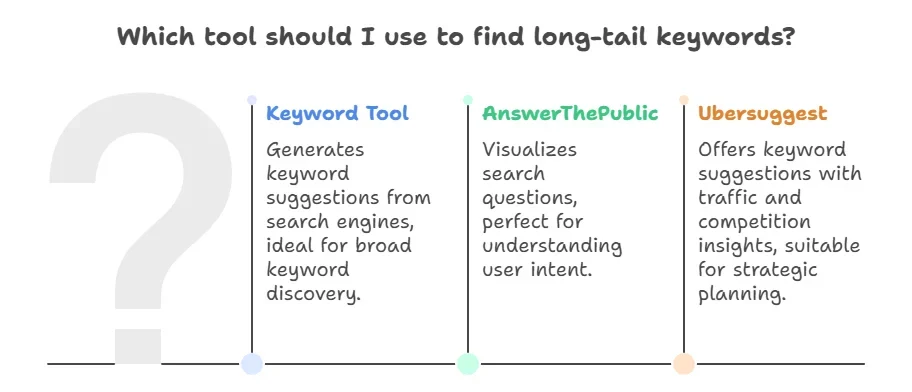
Strategic Placement for Long-tail Keywords
Using long-tail keywords effectively requires strategic placement within your content. Here’s a simple guideline to ensure you’re making the most of the keywords:
- Incorporate the long-tail keyword naturally in the title of your article.
- Use it in the introduction paragraph to highlight its relevance right away.
- Include the keyword in headers and subheaders where appropriate.
- Sprinkle it throughout the body content without forcing it, ensuring it reads naturally.
- Don’t forget to use variations of the keyword to capture related searches.
As you create your content, focus not just on optimizing for search engines but on delivering value to your readers. When you prioritize providing useful and engaging information, you naturally attract more visitors and increase your chances for conversion.
To successfully leverage long-tail keywords, you must be patient and persistent. SEO results won’t show overnight, but every piece of high-quality content you create builds upon your success. Regularly revisit your keywords and update your content to keep it fresh and relevant. This ongoing effort is essential for maintaining high rankings and continued traffic.
Affiliate marketing can be a profitable venture, especially when you understand the intricacies of Long-tail Affiliate Keywords. By using them effectively in your strategy, you can enhance visibility, engage your audience, and ultimately increase your affiliate sales.
For more in-depth insights into keyword strategies, you may also find resources at Search Engine Journal and Moz.
How to Identify Profitable Long-Tail Keywords for Your Niche
Finding profitable long-tail keywords can significantly increase your chances of success in affiliate marketing. These keywords are specific phrases that usually consist of three or more words. They cater to an audience that is further along in the buying process. Here’s how you can identify them for your niche.
Understand Your Audience
To start, think about what your potential customers really want. Consider their pain points, questions, and interests. Long-tail Affiliate Keywords often reflect the exact phrases they use when searching. This means understanding your audience is key. Use the following strategies to dig deeper:
- Surveys or interviews: Ask your audience direct questions about their needs.
- Online forums: Visit platforms like Quora or Reddit, where your target customers ask questions.
- Social media: Monitor discussions on Twitter, Facebook, or Instagram related to your niche.
Keyword Research Tools
Once you have a good understanding of your audience, use keyword research tools to find potential long-tail keywords. Some popular options include:
- Ahrefs: Great for comprehensive keyword analysis.
- Moz: User-friendly and offers great insights.
- Ubersuggest: Provides a free option for basic keyword discovery.
These tools allow you to enter a seed keyword and generate related long-tail keywords useful for your niche. Look for keywords with lower competition but sufficient search volume.
Analyze Search Intent
Understanding search intent is crucial when selecting your long-tail keywords. There are mainly three types of search intent:
- Informational: Users seek information. For example, “how to fix a leaky faucet.”
- Navigational: Users are looking for a particular website. For example, “Facebook login.”
- Transactional: Users want to make a purchase. For example, “buy iPhone 14 online.”
Your focus should be primarily on transactional and informational keywords, which can lead to conversions. Think about what content you can create to meet this intent and incorporate the Long-tail Affiliate Keywords naturally.
Use Google Suggest and Related Searches
Another effective way to uncover long-tail keywords is to use Google’s autocomplete feature. Begin typing a keyword related to your niche in Google’s search bar, and take note of the suggestions that appear. Also, scroll down to the bottom of the search results page to find “Related Searches”. Both of these methods can reveal valuable long-tail keywords.
Competitor Analysis
Analyzing what keywords your competitors use can be enlightening. Look at their content and see which long-tail keywords they are targeting. You can use tools like SpyFu or SimilarWeb to see this data. The goal is not to copy them but to identify gaps where you can provide better, more targeted content.
Testing and Iteration
After identifying long-tail keywords, don’t stop there. Create content around them, then measure its performance. Google Analytics can help you track visitors and their behavior. If some keywords perform well, consider producing more content around similar phrases or improving existing articles to better serve the keywords.
Tips for Writing Content with Long-Tail Keywords
When creating content, keep a few best practices in mind:
- Use long-tail keywords naturally in your titles, headings, and body.
- Aim for high-quality and informative content that provides value.
- Break up text with bullet points, lists, and visuals to enhance readability.
- Include internal and external links to relevant and authoritative resources.
By following these steps, you can effectively identify profitable long-tail keywords for your niche. This focused approach will lead not just to higher traffic, but also to better engagement and conversion rates in your affiliate marketing efforts.
| Keyword Research Tool | Strengths |
|---|---|
| Ahrefs | In-depth data, competitive analysis |
| Moz | User-friendly, tips for SEO |
| Ubersuggest | Free options, suggestions for long-tail keywords |
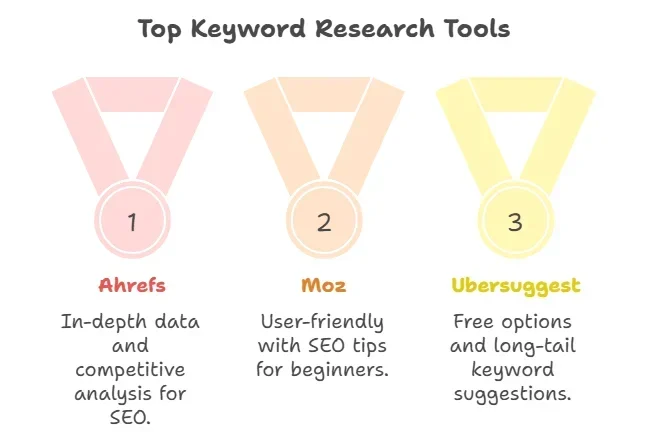
Implementing these strategies will put you on the path to mastering long-tail keywords, making your content more discoverable and ultimately more profitable.
Strategies for Optimizing Content Around Long-Tail Keywords
To achieve success in affiliate marketing, leveraging Long-tail Affiliate Keywords can significantly enhance your content strategy. These keywords often consist of three or more words, targeting niche audiences with specific search intents. By optimizing your content around long-tail keywords, you can attract highly relevant traffic and increase conversion rates. Here’s how to effectively optimize your content.
Conduct Thorough Keyword Research
Finding the right long-tail keywords is the first step in your optimization journey. Use tools such as Google Keyword Planner, Ahrefs, or Ubersuggest to discover terms that align with your affiliate products. Consider these strategies for keyword research:
- Analyze search volume and competition to select keywords that are easier to rank for.
- Utilize Google Autocomplete to find what users are searching for.
- Check out forums and Q&A sites like Quora to understand audience questions.
Incorporate Keywords Naturally
Once you’ve identified relevant long-tail keywords, your next goal is to integrate them seamlessly into your content. Keyword stuffing can harm readability and search rankings, so aim for a natural flow. Consider placing keywords in:
- The title and subtitles of your articles
- The first 100 words of the content
- Image alt tags and filenames
- Meta descriptions to attract clicks
Focus on High-Quality Content Creation
At the heart of any successful SEO strategy is high-quality content. Your audience will appreciate informative and engaging content, which keeps them on your page longer. When writing, keep these tips in mind:
- Answer specific questions related to the long-tail keywords.
- Use simple language and avoid jargon. This improves readability for a broader audience.
- Break your content into smaller paragraphs and utilize bullet points for easier skimming.
Optimize Your Content Structure
Utilizing a well-structured format improves user experience and makes your content easier to digest. Here are some structural tips:
- Use clear, descriptive titles and subtitles to guide your readers.
- Incorporate visuals such as images and infographics relevant to your content theme.
- Include tables when presenting comparative data, making information readily accessible.
Here’s an example of how to structure data consistently:
| Long-Tail Keyword | Search Volume | Competition |
|---|---|---|
| best kitchen gadgets for cooking | 1,200 | Medium |
| how to choose a blender for smoothies | 850 | Low |
| affordable running shoes for flat feet | 900 | High |
Engage with Your Audience
After publishing your content, it’s essential to interact with your audience. Encourage comments and respond promptly to build trust and community. This fosters a loyal following that can lead to increased conversions through your affiliate links. Utilize these techniques:
- Ask open-ended questions at the end of your posts.
- Incorporate polls or surveys to gain insights from your audience.
- Share your content on social media platforms to reach a wider audience and initiate discussions.
Monitor and Measure Performance
Regularly analyzing the performance of your content will help you fine-tune your strategy. Use Google Analytics to track metrics like traffic, bounce rate, and conversion rate. Look for patterns to understand which long-tail keywords perform best and consider updating underperforming content.
To delve deeper into optimizing your content around long-tail keywords, you can check out resources like Neil Patel or Ahrefs.
By implementing these strategies, you can effectively optimize your content around long-tail keywords and drive meaningful traffic to your affiliate links. Remember, the goal is always to create engaging and valuable content that meets the needs of your audience.
The Role of Long-Tail Keywords in Driving Targeted Traffic
Long-tail keywords play a pivotal role in driving targeted traffic to websites, acting as a bridge between businesses and their potential customers. Unlike short-tail keywords, which are often broad and highly competitive, long-tail keywords are more specific phrases that potential customers are likely to use when they are closer to making a purchase or are in a more defined search phase. This specificity makes them incredibly valuable for affiliate marketers and website owners looking to optimize traffic.
When you incorporate long-tail keywords, you essentially tap into a treasure trove of unique search queries. For instance, instead of targeting the keyword “shoes,” a long-tail alternative could be “best running shoes for flat feet.” This targeted phrasing reduces competition significantly and caters to users with specific intent. Here’s why focusing on long-tail keywords can elevate your traffic strategy:
Why Focus on Long-tail Keywords
- Less Competition: Long-tail keywords generally have lower search volumes, making it easier to rank for them and attracting users who are more likely ready to engage.
- Higher Conversion Rates: Users searching for specific terms tend to be further down the sales funnel, resulting in higher conversion rates for your affiliate offers.
- Improved User Experience: By tailoring content to match specific long-tail keywords, you can meet user needs more effectively, providing value and enhancing their experience on your site.
Generating Long-Tail Keywords
Generating a list of Long-tail Affiliate Keywords can start with a simple brainstorming session. Consider the following strategies to discover effective options:
- Utilize tools like Google Keyword Planner, Ubersuggest, or SEMrush to find keyword suggestions.
- Look at the “People also ask” section in Google search results for real-time user interest.
- Analyze competitor websites to find keywords they are targeting, especially if they are ranking high.
Strategic Incorporation
Once you’ve identified suitable long-tail keywords, it’s crucial to incorporate them strategically into your content. Here are some effective methods for doing so:
- Create Quality Content: Write engaging articles or blog posts that answer the specific questions users have in mind. Include your long-tail keywords naturally throughout the text.
- Optimize Meta Tags: Use long-tail keywords in your page titles, meta descriptions, and headings to boost visibility in search results.
- Use Internal Linking: Link to other relevant pieces of content on your site using long-tail keywords as anchor text to improve site structure.
Key Performance Indicators (KPIs)
It’s essential to track the performance of the long-tail keywords you choose. Here are some KPIs to measure:
| Metric | Description |
|---|---|
| Organic Traffic | Number of visitors arriving via search engines for your long-tail keywords. |
| Bounce Rate | Percentage of visitors who leave your site after viewing only one page. |
| Conversion Rate | Percentage of visitors who complete a desired action, like making a purchase. |
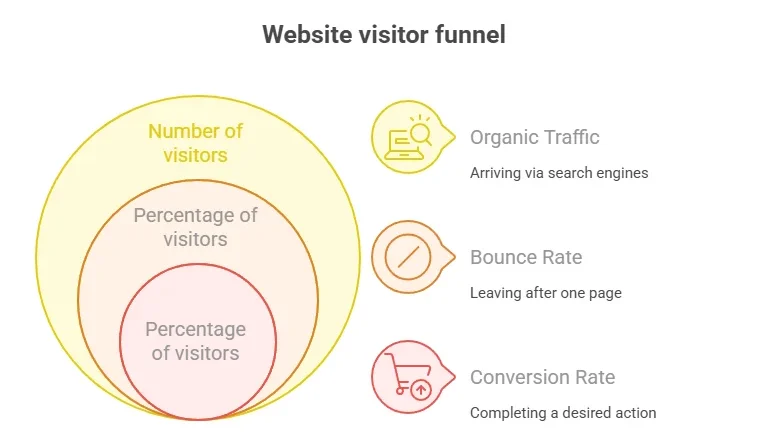
As you hone your skills in using long-tail keywords, remember that you’re not just targeting search engines—you’re prioritizing human users. Engaging and valuable content will naturally rank better in search results. Maintaining a focus on user satisfaction builds trust and authority, which leads to improved search engine visibility over time.
If you’d like to dive deeper into the world of long-tail keywords and their impact on affiliate marketing, consider visiting resources such as Ahrefs or WordStream for additional insights and tools that can aid in your keyword research journey.
Leveraging long-tail keywords is an effective way to drive targeted traffic. By focusing on specificity and user intent, you’re not only enhancing your SEO strategy but also offering real value to readers, thereby fostering a more robust online presence.
Common Mistakes to Avoid When Using Long-Tail Affiliate Keywords
When it comes to long-tail keywords, many marketers stumble into common pitfalls that can hinder their success. Avoiding these mistakes can help you effectively reach your target audience and enhance your affiliate marketing efforts. Here are some common errors to steer clear of:
The Lack of Niche Focus
One frequent mistake is failing to define a specific niche. When you use long-tail keywords, it’s essential to understand your audience’s needs. Broad keywords may seem appealing, but they often lead to high competition and less targeted traffic. Narrowing down your focus allows you to cater to a specific group of people, resulting in higher conversion rates.
Ignoring Keyword Research
Skipping keyword research can be detrimental to your campaigns. Utilize tools like SEMrush or Ahrefs to discover effective Long-tail Affiliate Keywords related to your niche. These tools can show search volume, competition level, and trends that inform your strategy. Neglecting this step may mean you’re targeting the wrong keywords, resulting in wasted efforts.
Focusing Solely on Search Volume
Another mistake is placing too much emphasis on search volume. While it’s crucial to know how many people search for your keywords, conversion potential should also be a priority. Sometimes, less popular long-tail keywords can yield higher conversions because they are more specific. Aim for a balance between search volume and the likelihood of conversion.
Overstuffing Keywords
When you find a promising long-tail keywords, there may be an urge to use it excessively. Keyword stuffing can lead to poor readability and may result in penalties from search engines. Instead, aim for natural phrasing, incorporating keywords in a way that flows smoothly within your content. Always prioritize your readers over search engines.
Ignoring User Intent
Not paying attention to user intent is another common misstep. Knowing what users want when they type in long-tail keywords is crucial for providing relevant content. For instance, someone searching for “best budget-friendly running shoes” is likely looking for reviews or comparisons. Make sure your content directly addresses their query to enhance user experience.
Neglecting Competitor Analysis
Failure to analyze your competitors can leave you at a disadvantage. Examine what successful affiliates are doing with similar long-tail keywords. Take note of their content strategies, the type of products they promote, and how they engage their audience. Doing so gives you insight into what works and can inspire your own content and marketing tactics.
Forgetting About Mobile Optimization
With more people using smartphones for searches, mobile optimization should not be overlooked. Ensure your website is mobile-friendly, as this enhances user experience and improves your rankings in search results. If your site doesn’t perform well on mobile, you might miss out on potential traffic generated through long-tail keywords.
Not Utilizing The Right Platforms
Choosing the right platforms to promote your long-tail keywords can shape your success. While blogs and websites are common avenues, consider social media and forums related to your niche, too. Engaging in these communities boosts visibility and allows you to showcase your expertise. Platforms like Pinterest and Reddit can be highly effective for niche audiences.
Ignoring Analytics
Not regularly checking your analytics can lead to missed opportunities for improvement. Utilize tools like Google Analytics to monitor the performance of your keywords. Understanding which keywords drive traffic and which do not allows you to adapt your strategy. Regularly refining your approach based on data will lead to better results over time.
Underestimating the Importance of Quality Content
Ultimately, the quality of your content plays a pivotal role in your success with long-tail keywords. Focus on creating valuable, informative, and engaging content that resonates with your target audience. Well-researched articles, engaging videos, and helpful guides can captivate your readers and encourage them to act on your affiliate links.
| Mistake | Consequence | Prevention Strategy |
|---|---|---|
| Lack of Niche Focus | Low conversion rates | Identify and focus on a specific niche |
| Ignoring Keyword Research | Targeting wrong keywords | Use tools like SEMrush and Ahrefs |
| Keyword Stuffing | Poor content readability | Focus on natural phrasing |
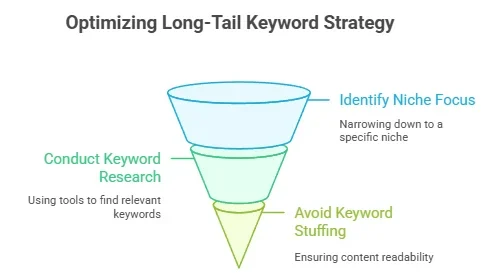
Being aware of these common mistakes allows you to refine your strategy and optimize your use of Long-tail Affiliate Keywords effectively. By focusing on valuable content and understanding your audience, you can improve your affiliate marketing success.
Conclusion
Harnessing the power of long-tail keywords can significantly enhance your online income potential. By understanding their definition and importance, you position yourself to tap into highly specific search queries that often lead to higher conversion rates. Identifying profitable long-tail keywords tailored for your niche allows you to focus your efforts effectively, ensuring that the content you create meets the unique needs of your target audience.
Optimizing your content around these keywords strengthens your chances of ranking higher in search engines, attracting the right visitors to your site. These visitors are more likely to convert because they are searching for exactly what you’re offering. Furthermore, recognizing the common mistakes to avoid ensures that your approach remains purposeful and effective, steering clear of pitfalls that could derail your efforts.
As you venture into the world of Long-tail Affiliate Keywords, patience and persistence are essential. Monitor your analytics to understand what is working and what needs tweaking. Engage with your audience, gather feedback, and refine your strategy accordingly. With a focused approach, you not only boost your traffic but also create value for your readers, leading to long-term success in affiliate marketing. Embrace the journey of leveraging long-tail keywords, and watch your affiliate endeavors flourish in ways you may not have thought possible.
